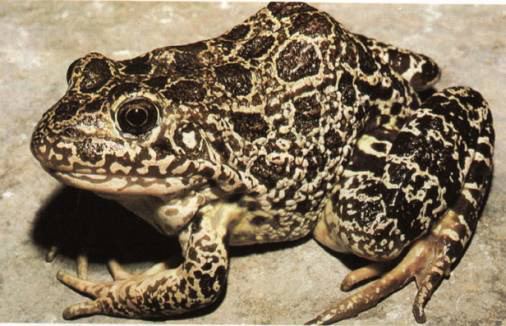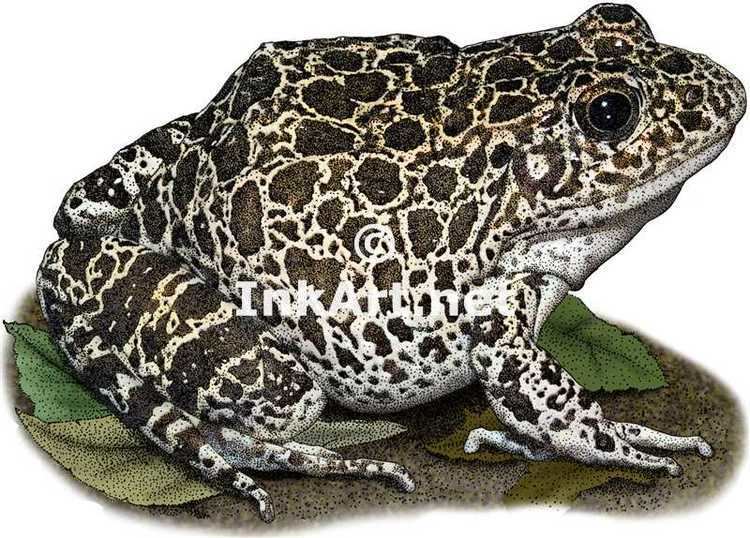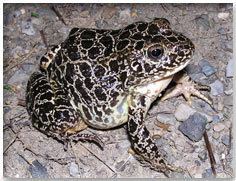Family Ranidae | Phylum Chordata Order Anura Genus Lithobates Rank Species | |
 | ||
Similar Gopher frog, Plains leopard frog, Southern leopard frog, Lithobates, Pickerel frog | ||
Crawfish frogs
The crawfish frog (Lithobates areolatus) is a medium-sized species of frog native to the prairies and grasslands of the central United States. It gets its name because it inhabits the burrows of crayfish for most of the year.
Contents

Description

The crawfish frog grows from 2.2 to 3.0 in (5.6 to 7.6 cm) in length. It ranges from yellow to brown in color, with a white ventral surface. The numerous dark brown spots on its back each has a light-colored ring around it. It has a distinct skin fold on either side of its back, which are much more pronounced in males than females, and a relatively small tympanum.
Behavior
Crawfish frogs are found primarily in association with prairie or grassland habitat, though they will also make use of pastures and overgrown fields. They spend most of the year in association with a terrestrial crayfish burrow. Interestingly, this species spends a substantial amount of time active and above ground even on hot summer days, but they never stray far from their burrow which serves as an important retreat from predators, a vital source of water, an escape from grassland fires, and a means to get below the frost line during winter. Crawfish frogs feed opportunistically on insects and other small invertebrates that pass by their burrow.

The crawfish frog breeds following mild, rainy weather in mid-March throughout most of its range (breeding occurs much earlier in the southern portion of its distribution). During this time, males seek out ephemeral ponds and wetlands that lack fish and begin calling. The low-frequency call may carry over a mile, drawing females in from the surrounding area. Once the females arrive, amplexus takes place and the females deposit up to 7,000 eggs at a time in large, globular masses. The eggs hatch in about 12 days, and the tadpoles complete metamorphosis into froglets within three or four months. The newly metamorphosed juvenile frogs must quickly find a crayfish burrow to occupy to avoid predation. Crawfish frogs become sexually mature at two to three years of age and may live up to seven years or more in the wild.
Geographic range

The crawfish frog is found in former prairie regions from Indiana west to Kansas, south to Texas, and east to Mississippi, though it is believed to be locally extirpated in many regions, and remaining populations are often localized and isolated.
In 2016 a sizable population was documented in Sumter County, Alabama.
Subspecies
The two subspecies of crawfish frog (R. areolata) are:
Conservation status
The crawfish frog is listed as near threatened by the IUCN Red List of Threatened Species, and is listed as endangered in Iowa (where it has likely been extirpated) and Indiana. Habitat loss is the biggest threat to this species, though disease (chytridiomycosis) and competitive pressure from other anurans have also been identified as potential stresses.
